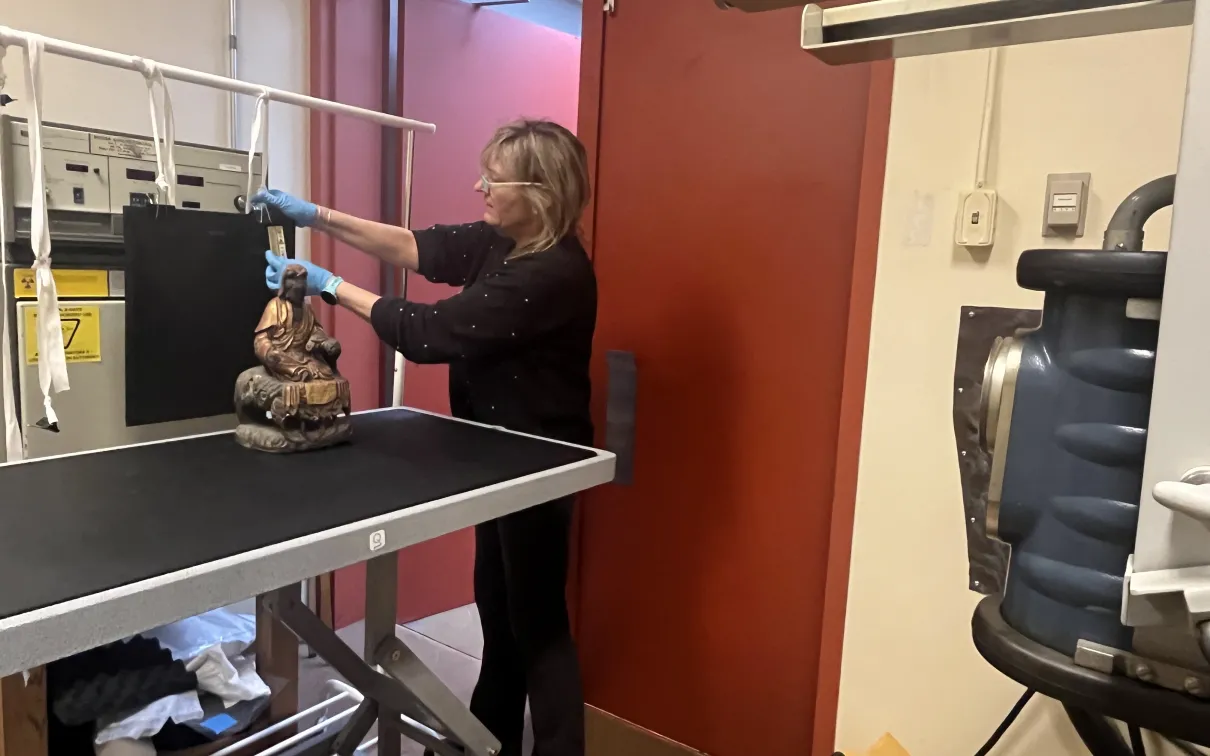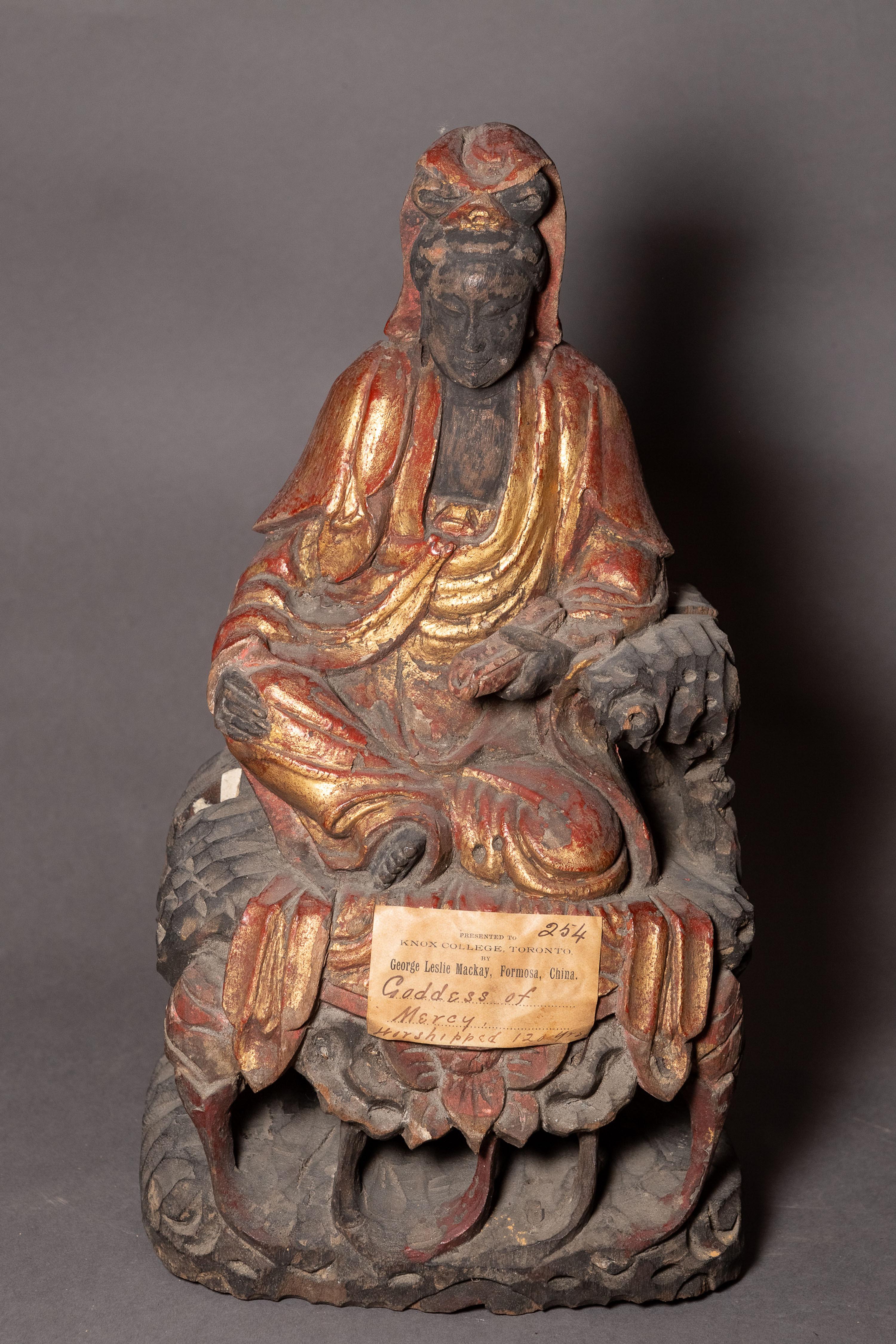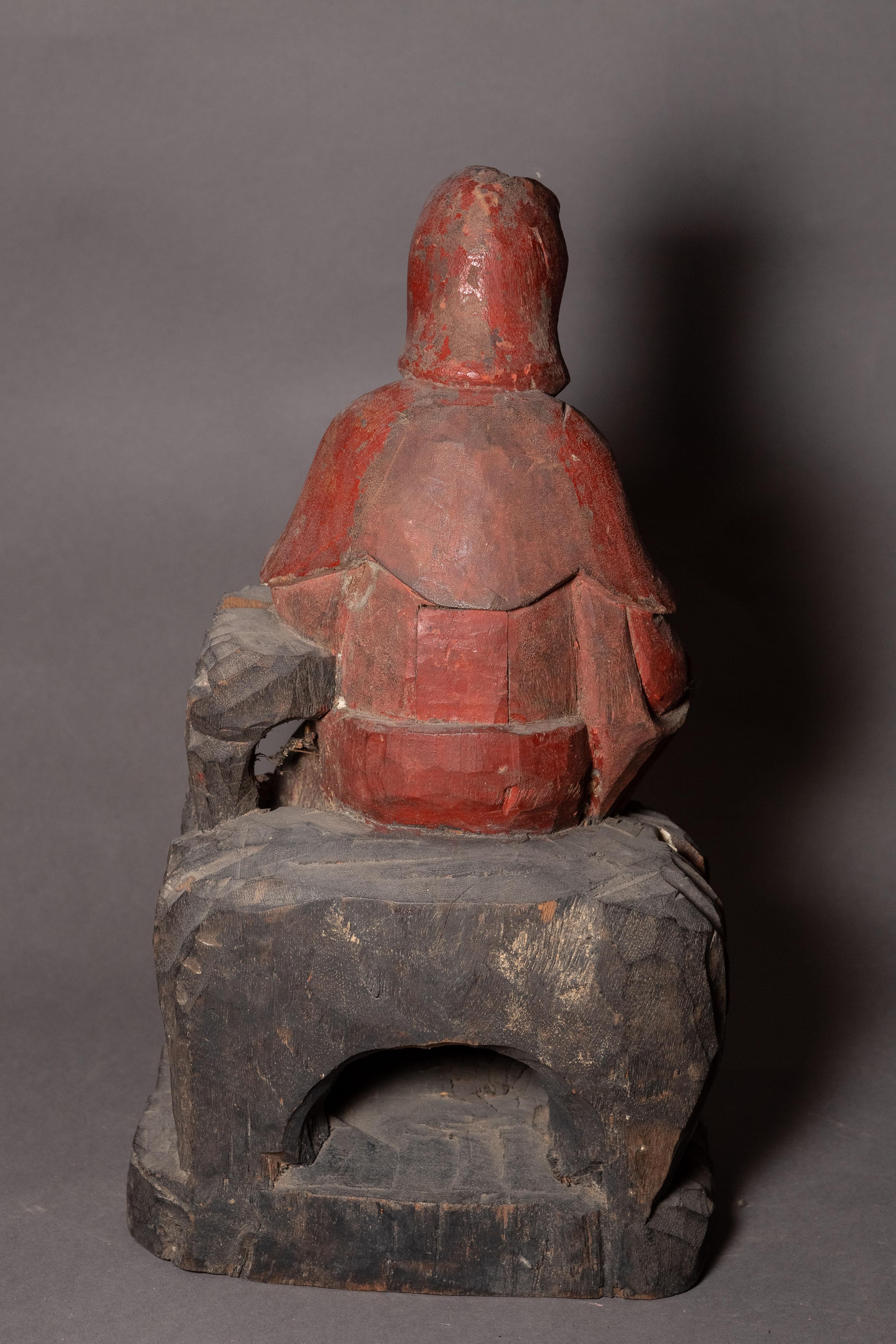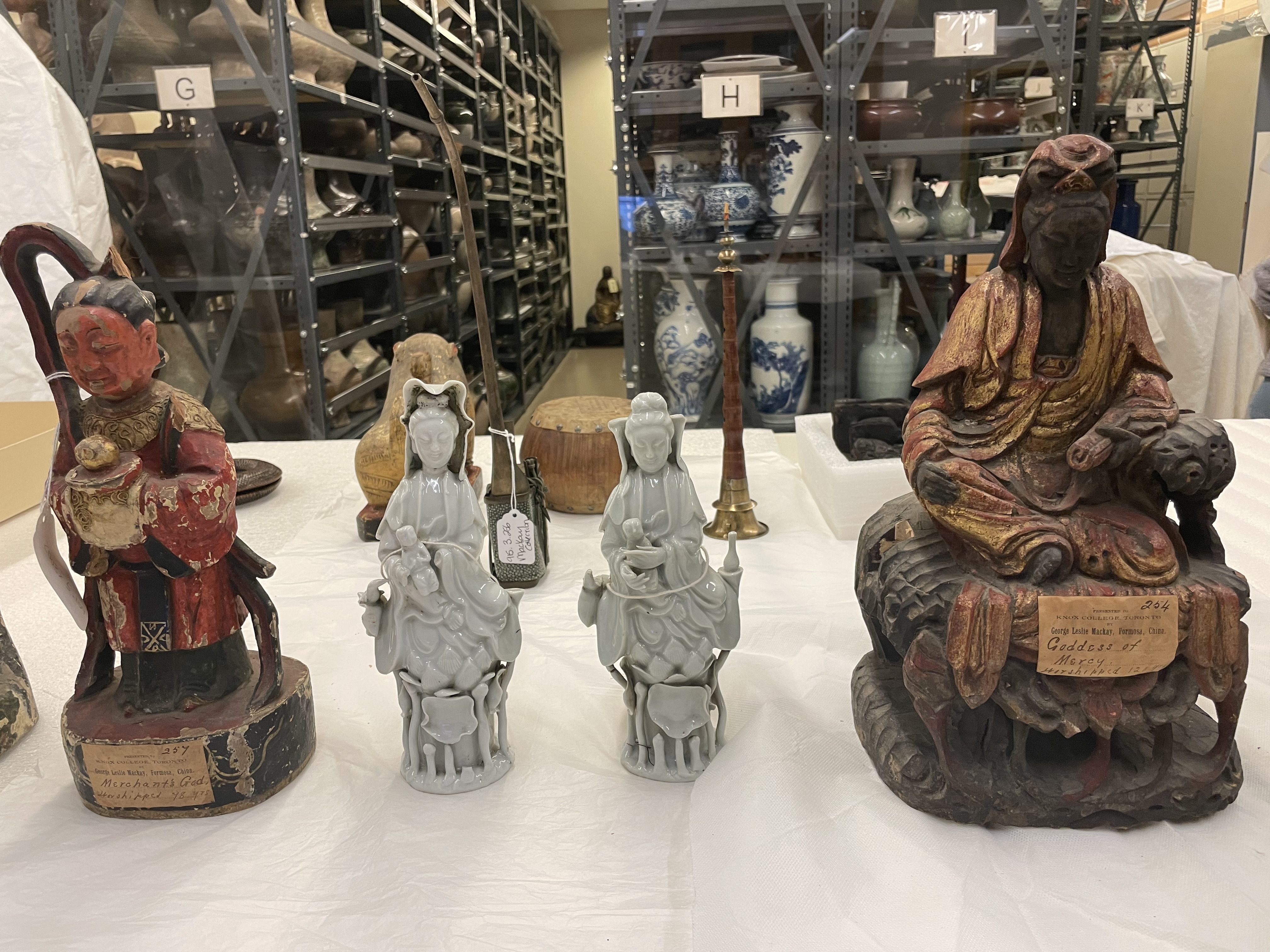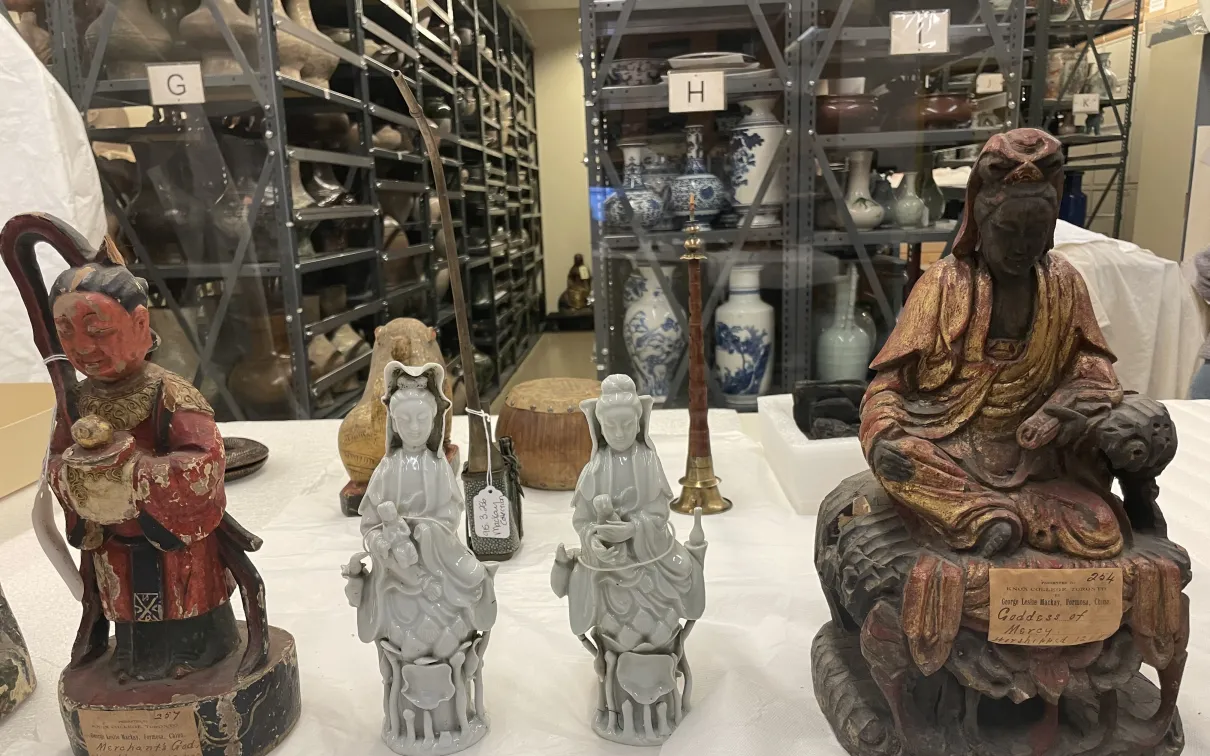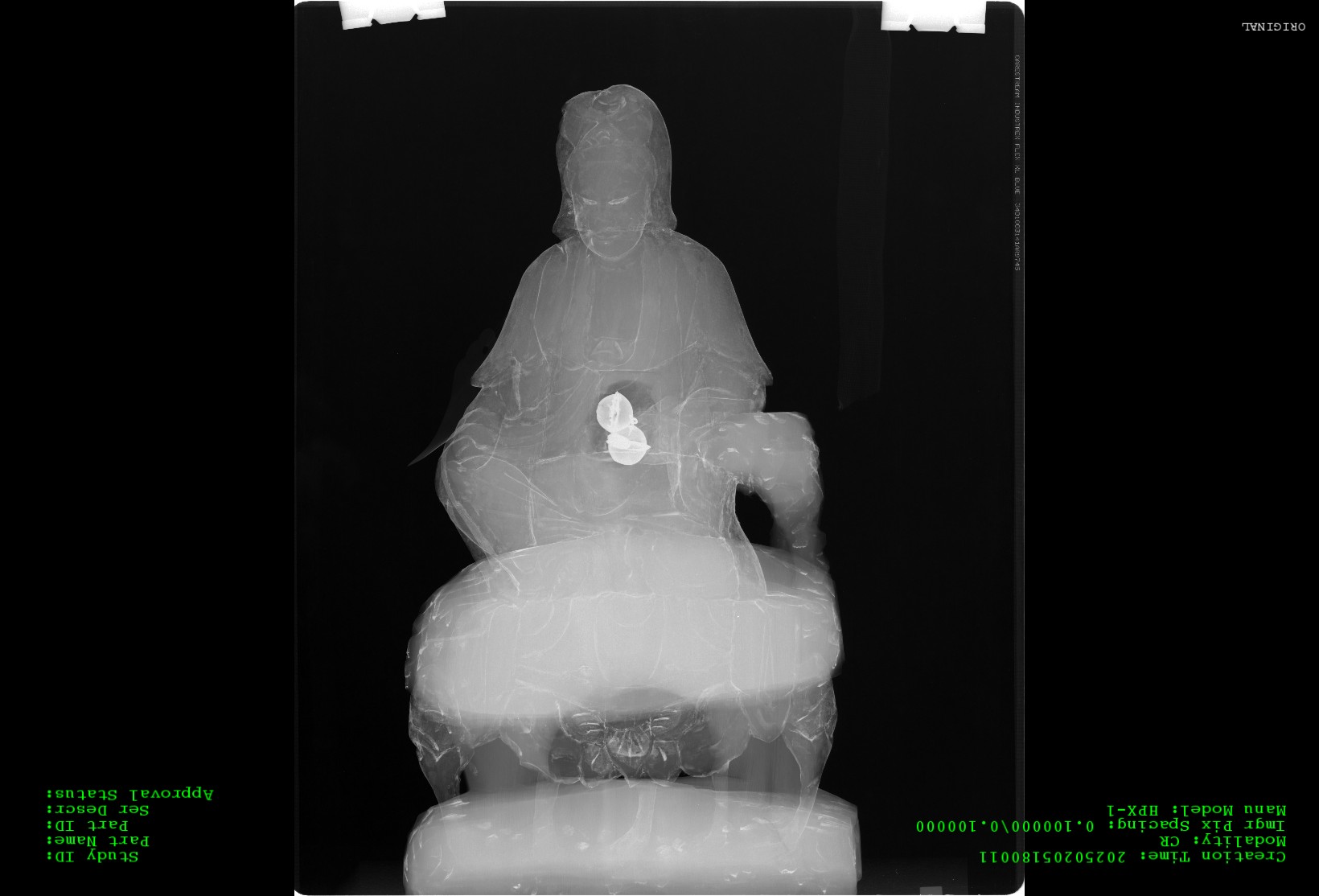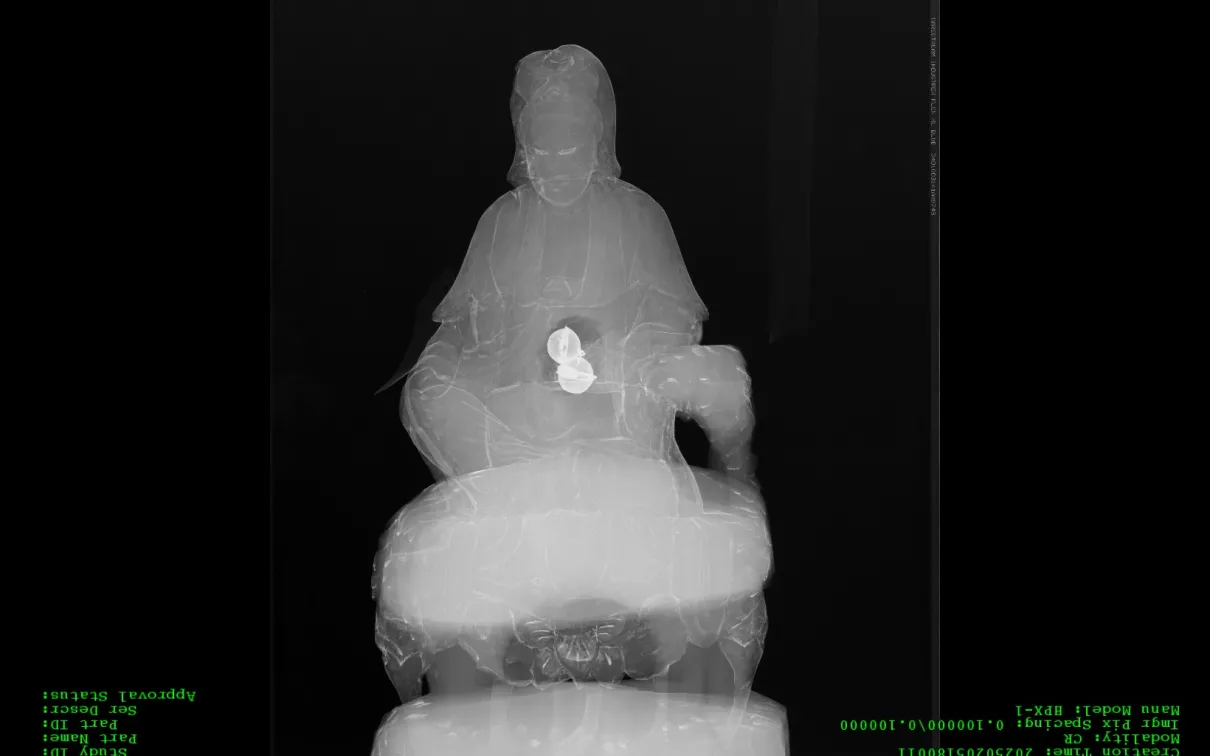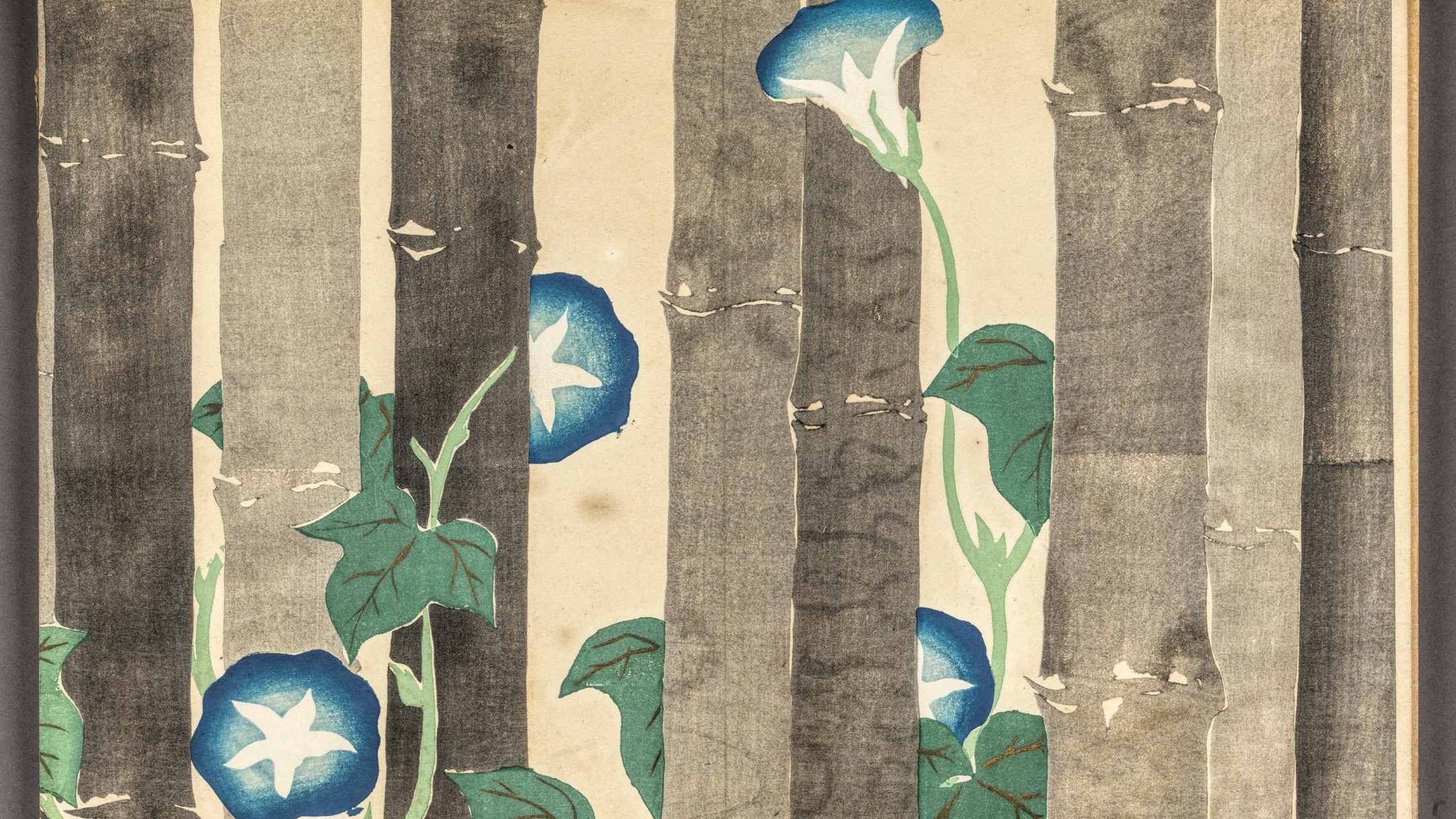Why X-Ray a God?
Published
Category
Author

Section I
Inside a lead-lined room in the Museum, Laura Lipcsei, Senior Conservator, Collections & Research at ROM, dons blue latex gloves as she carefully positions a painted wooden sculpture of Avalokiteshvara, the Bodhisattva of Compassion, on what looks like a black-topped gurney. Behind the sculpture is a large sheet of film butterfly-clipped to a white clothing rack; in front, a chunky X-ray machine.
Satisfied, Lipcsei leaves the room and closes the thick orange door behind her. The warning sign and bright siren above the door light up. Then, the X-ray machine blasts the sculpture with radiation, creating an image that will reveal what—if anything—lies hidden inside the over-a-century-old Taiwanese artifact.
Gallery Images
Section 2
Weeks later, Dr. Wen-chien Cheng, Senior Curator, Louise Hawley Stone Chair of East Asian Art at ROM, explains that the sculpture is one of more than 100 pieces acquired by the late Reverend George Leslie Mackay (1844–1901), the first Canadian Presbyterian missionary to northern Taiwan. As The Globe and Mail reported in 2024, Rev. Mackay, unlike many of his contemporary missionaries, “has evolved into a folk hero and one of the most influential Westerners in Taiwan” for his “good deeds,” including a “legacy of schools and hospitals.”
Although only seven percent of Taiwan’s population is now Christian, at the time, Mackay succeeded in converting many to his faith. And as they converted to Christianity, many Taiwanese gave their deity sculptures to Mackay, who volunteered to take them.
“When Mackay collected them, he recorded everything he knew about the sculptures—including the name of the deity, how many years the deity had been worshipped, and the location where he received it,” says Cheng.
One of the many deities represented among the sculptures held at ROM is Mazu, the Sea Goddess, who was the most prominent deity in the 19th-century island nation. And like many of the deities worshipped among the folk religions in Taiwan, Mazu’s origins can be traced back to the Fujian province in China, where she was also worshipped by Buddhists, Taoists, and Confucianists.
For Cheng, the construction of the painted wooden deities—a skill that was passed from generation to generation in workshops—is just as fascinating.
“It takes many, many years to master the carving,” she says. “It is a very complicated process, and there are all kinds of iconography you must follow.”
On the backs of these sculptures, you can also see traces of a small hole known as the “spirit entrance.” After the woodwork was finished and before the surface decoration began, Cheng explains that priests performed a ritual in which they placed an object that was considered auspicious or powerful—from relics and scriptures to coins, precious stones, and live insects—inside the spirit entrance, bringing the inanimate wooden statue to life. (These objects were also thought to ward off evil spirits and ensure plentiful harvests and a prosperous life.) Then, with the deity residing inside, the artisan could seal the entrance and begin painting and decorating the surface.
Cheng suspects that many Taiwanese, before giving their sculptures to Mackay, removed whatever objects they placed inside—a ritual to send the deity away when it was no longer worshipped. But without cracking the sculpture open, it is almost impossible to know what, if anything, is in each one.
Unless, of course, you have an X-ray machine.
Section 3
While the X-ray machine requires film, Lipcsei does not need a dark room and chemical baths to develop the photos. Instead, she pulls them up on her computer, the deities a combination of white, grey, and black shades.
“The X-ray beam goes through the object's material to the film at the back, creating an image in various shades of grey,” Lipcsei explains. “And the things that are most dense will block the X-rays from interacting with the film, creating a sort of white image, because the film is white.”
All of which means specialists like Lipcsei can study the sculptures without harming them—a guiding principle of conservation work.
Two of the three deity X-ray images she displays appear empty. But in the X-ray of Avalokiteshvara, Lipcsei identifies a bright white spot in the centre of the sculpture—two (likely hollow) round metal bells.
These “ox bells,” Cheng explains, are an “auspicious object” meant to ward off “evil spirits.” And well over a century after a worshipper placed these bells inside the sculpture in Taiwan, we can now see them, onscreen, at a lab in ROM.

